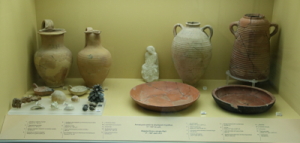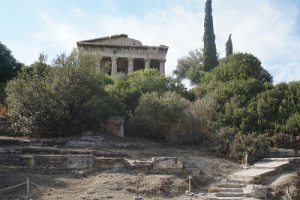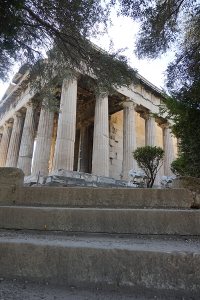Agora

In the ancient days, when Athens was in a very wealthy state, the Agora was the marketplace, the theater, the center for everyday life. This could even be the same area in which provided the foundation for present day democracy. The agora could have been same area in which Aristotle, Socrates, and Plato walked and talked with people about everyday events. Today, much of the once tall formations are in ruins.
However, once you begin to walk around the ruins that are left, a picture begins to form and you become aware of how vast the Agora once was. This location is amazing to think of the many lives have been impacted because of a few contemplative people. Come across ancient drainage canals, temples, pathways, and statues. Archeologists have been able to find beautiful artifacts from this whole area. Everything from funeral pots, small containers that held hemlock, coins, jewelry, pottery, a jury lottery system, statues, and more! These finds are located within the small museum within the Agora.

High on the hill also stands the most well preserved Greek temple to the god Hephaestus. Hephaestus was the god of smithing, and metal works. Climb up to explore this amazing temple with beautiful standing columns, and carvings. With this being the most complete temple, it gives an impressive idea of how large and grand these structures were. It also gives a better impression of how large this whole area once was. Still look higher, and standing above the Agora, the amazing temple to Athena, the Parthenon, stands tall above the entire city along with the Mars Hill where Paul gave his sermon to the people of Athens.

Entry into the Agora ruins and the museum is 4 Euro, however, this site is included if you already have a ticket to the Parthenon. This is also included if you bought a site combo ticket for the 12 Euro.